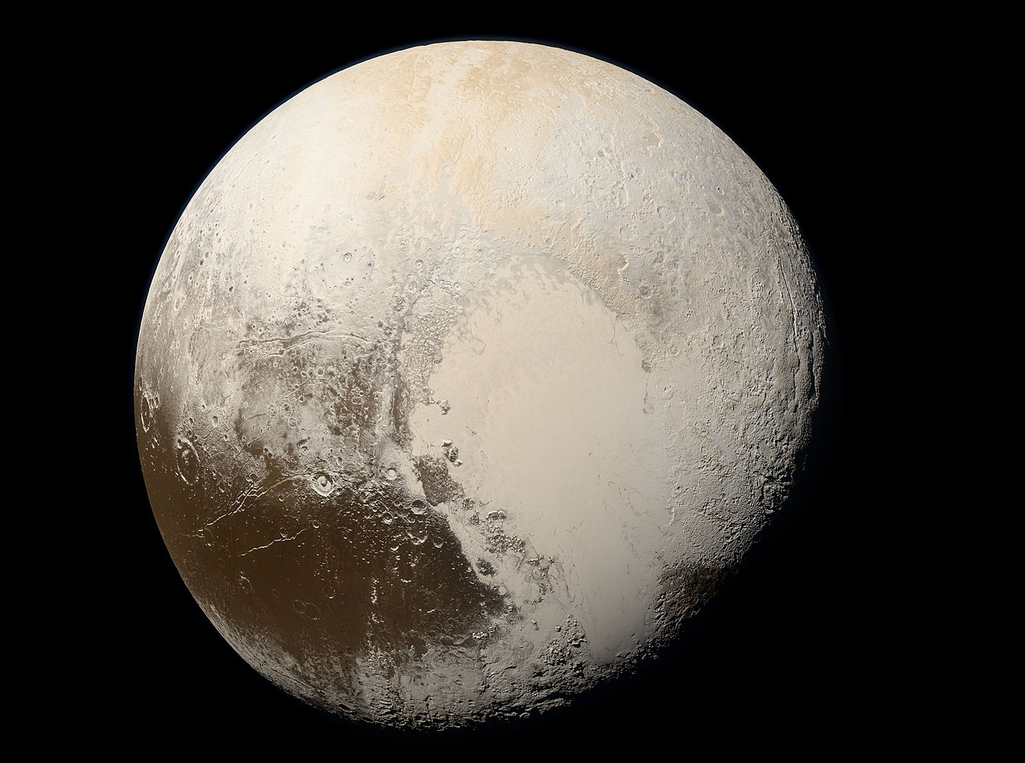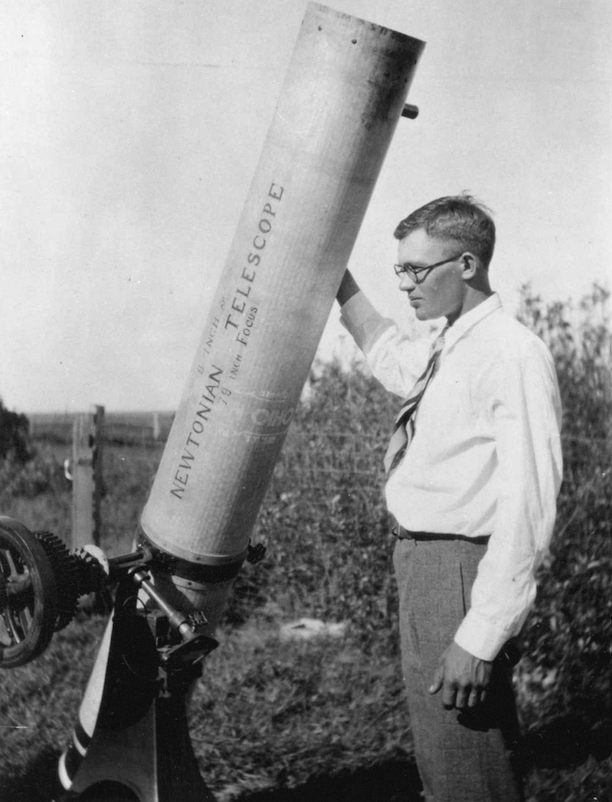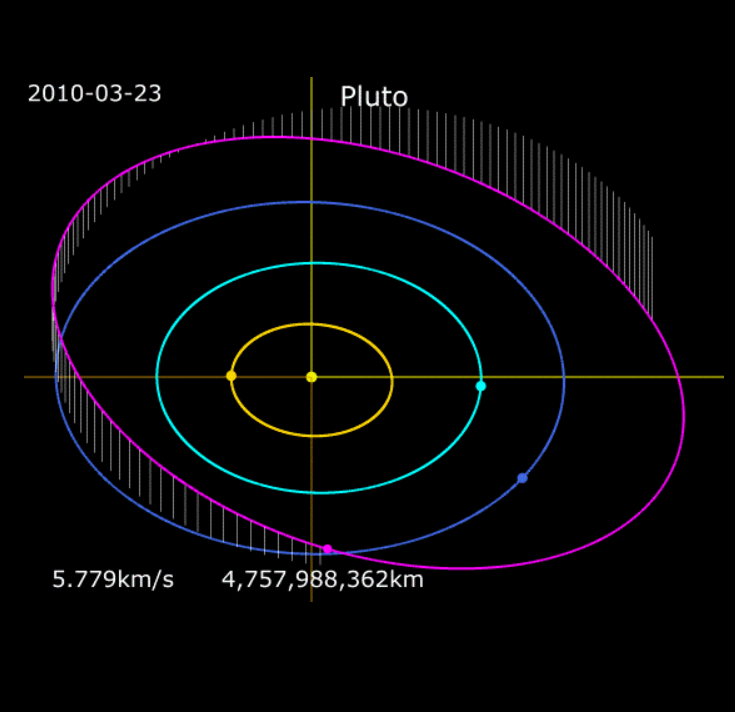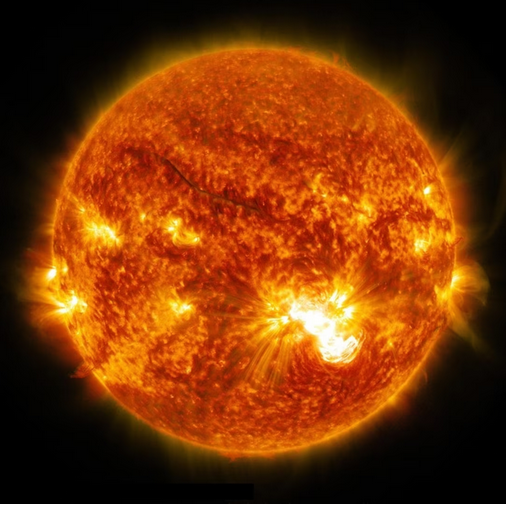We will learn more about Pluto in this post and some of the impressive statistics that surround this body in our solar system. So if you want to find out the answers to Pluto’s orbital period read on.
What Is Pluto?
Pluto is a minor-planet located in the Kuiper belt which is located past Neptune. It is the ninth-largest object which directly orbits our star, the Sun. As part of the Kuiper belt it is made primarily of ice and rock and is vastly smaller than our solar system’s inner planets.

It is in fact smaller than Earth’s Moon with a mass 6 times smaller and a volume that is roughly one-third of the Moon’s. Discovered in 1930 it was initially termed the ninth planet of our solar system. This has however since changed.
How Far is Pluto from Earth?
As with all planets in our solar system the distance between them varies depending on their positions in their respective orbits around the Sun. When Earth and Pluto are on opposite sides of the sun they are 4.67 billion miles apart. At their closest point however they are 2.66 billion miles apart.
How Far is Pluto from the Sun?
The distance between the Sun and Earth is equivalent to a unit of measure known as astronomical units (AU) and Pluto sits 39 AU away from our solar system’s only star. This means on average it is 3.7 billion miles (5.9 billion kilometers) away from the Sun.
Pluto’s Structure
The basic internal structure of Pluto includes a silicate based core surrounded by a liquid water ocean and a final water ice crust. Pluto’s plains region on the surface is likely composed of at least 98% nitrogen ice with trace amounts of both methane and carbon monoxide.
Pluto’s mountains are thought to be composed of water ice. These various types of surface ice create a look to Pluto’s surface of diverse colorations. This creates a lot of contrast on the surface making it one of the most visually spectacular bodies in our solar system.
The color of Pluto varies from charcoal black, to dark orange and white. In appearance it is similar although less orange to Jupiter’s moon Io but significantly less red than Mars. Notable geographic features on the surface of Pluto include:
- Tombaugh Regio (the Heart)
- Cthulhu Macula (the Whale)
- Brass Knuckles
A lack of significant craters on the surface of Pluto indicate that its current surface may be between 140,000 – 270,000 years old
Does Pluto Have Moons?
According to NASA Pluto has five known moons: Charon, Nix, Hydra, Kerbos and Styx. Prevailing theories suggest these moons may have formed as a result of Pluto colliding with another body in space that may have been similar in size to itself.
Its largest moon Charon is roughly half Pluto’s size making it the largest moon in comparison to the planet it orbits. Charon’s orbit is such that it matches the rotation of Pluto meaning that it is always visible from the same portion of the planet. It does not rise or fall in the sky and the other side of the planet does not get to see Charon at all.
History of the Observation of Pluto
Unlike most of the other planets in our solar system Pluto was not visible to ancient astronomers. It took considerable strides in telescope technology in fact to even suspect another planet’s existence beyond Neptune.
It was in the 1840s that Urbain Le Verrier using Newtonian mechanics predicted the presence of Neptune based on the effects on Uranus’s orbit. Once Neptune was discovered it was then deemed that it might just be Neptune that was affecting Uranus, although a second planet was theorized.
A search for this illusive ninth planet captured the imagination of professional and amateur astronomers alike for decades. Some even captured Pluto on images with their telescopes but were not aware of what they had found until later.
A project to find the elusive “Planet X” as it was known started in 1906. It was wealthy Bostonian Percival Lowell, founder of Lowell Observatory in Flagstaff, Arizona that would spend his final years searching for this ninth planet. Lowell would capture Pluto in two faint images in 1915 but he did not know what he was seeing.
Lowell died in 1916 and the project stalled until his widow petitioned the observatory to resume the search, which it did in 1929. Clyde Tombaugh was tasked with the painstaking project but after a year he would finally locate Pluto and its official existence was reported to Harvard College Observatory on March 13th 1930.

Space Exploration
Pluto has only recently been approached using terrestrial space craft in the form of the 2015 New Horizons mission. Originally launched in 2006 it made its closest pass on July 14th 2015. A great deal was learned from the mission and some amazing images were beamed back to Earth.
To date this is the only mission to Pluto although scientists continue to advocate for new missions with further scientific intentions. There is a hope to one day map the entire surface of Pluto and make further investigations of the planet’s moons.
It’s Not a Planet
For many years following its discovery there was contention with regards to it being an actual planet. In 2006 the International Astronomical Union IAU set out three basic rules to define a planet these rules are:
- The object must orbit the sun
- It must be large enough to be rounded by its own gravity
- It must have cleared the neighborhood around its orbit

This was a case of two out of three not being good enough and Pluto failed based on the last rule. Clearing the neighborhood requires that the object is gravitationally dominant around its own orbit. This is not the case with Pluto. It therefore is classified as a dwarf planet.
How Did Pluto Get Its Name?
Pluto has the distinction to be the first and presently only planet named by an 11-year-old girl. Venetia Burney suggested to her grandfather that the new planet be named for the Roman God of the Underworld, Pluto.
Venetia’s grandfather was a well respected librarian with many friends who were astronomers. He mentioned his granddaughter’s suggestion to Astronomer Herbert Hall Turner who cabled the idea to astronomers at Lowell Observatory. The idea was accepted and subsequently the moons of Pluto were given names associated with mythical underworld characters.
What Is the Sun?
The orb that is visible in our daylight sky which we know as the sun is in fact a star. This star is classified as a yellow dwarf and is central to our solar system. Earth and the other planets of our solar system orbit this vast star. In fact it is our own planet’s rotation and orbit which creates the appearance of the sun moving across our sky. It itself is stationary as we revolve around it.

How Big Is the Sun?
The sun on a clear day is visible from the earth and in fact we should never stare directly at it. This is despite it being 93 million miles away so just how big is this giant orange orb? Scientists estimate that the sun has a radius of roughly 435,000 miles.
This may sound massive but there are many known stars which are much larger. In comparison to our planet however the son is roughly 330,000 times the mass of earth and we could fit our planet into the sun 1.3 million times.
What Holds the Sun Together?
The sun because it is a star is actually a huge ball of gas which is held together by its own internal gravitational forces. It is made up of several regions which include in order from the center out:
- Core
- Radioactive zone
- Convection zone
- Photosphere
- Chromosphere
- Transition zone
- Corona
Once material exits the corona of the sun at supersonic speeds, it becomes what is known as a solar wind. This solar wind forms a huge magnetic bubble of sorts around the sun which is known as the heliosphere. It is this heliosphere that extends beyond the orbit of all the planets in our solar system. Essentially our planet as well as all others in the solar system are held within the sun’s atmosphere.
How Long Does It Take Pluto to Go Around the Sun?
When we talk about any planet’s orbit around the Sun, especially with regards to how long it takes to complete its circuitous journey, we refer to its orbital period. Pluto is one of the more distant planetary bodies from the Sun in our solar system so its orbital period is quite long.
It takes Pluto 90,530 Earth days or roughly 248 Earth years for Pluto to complete a full orbit around the Sun. To put this in perspective when Pluto was last in the same position in its orbit as it is in 2023 certain historical events were taking place. These included:
- The start of the American Revolutionary War
- Pope Pius VI became the 250th Pope
- André-Marie Ampère, French physicist and mathematician died
Final Thoughts
Pluto was formerly considered a planet but was downgraded a few years ago. It is a distant dwarf planet which is billions of miles away from the Sun and from our own planet, Earth. It is in fact so far away it takes roughly 9 years to make the journey from Earth to Pluto.
